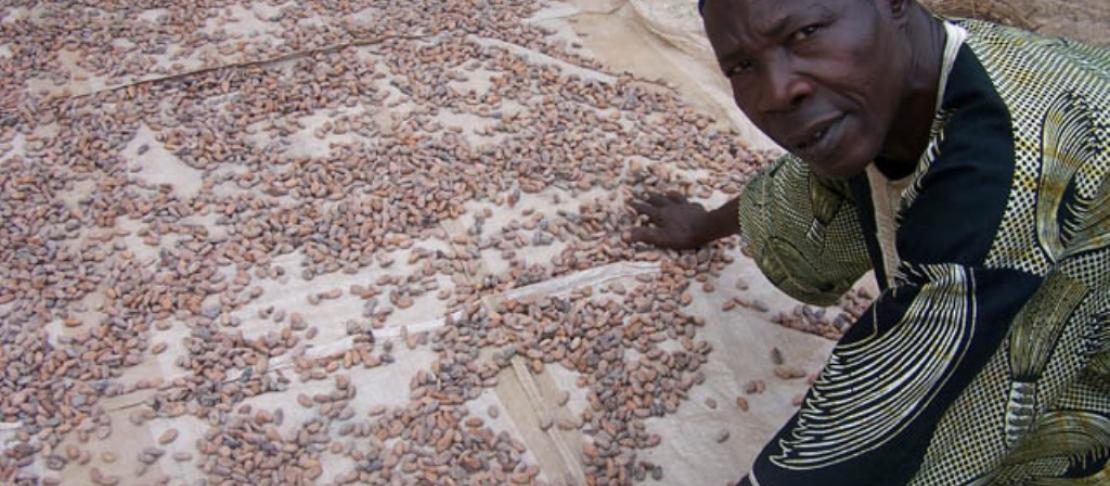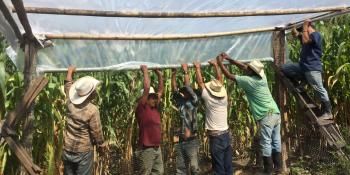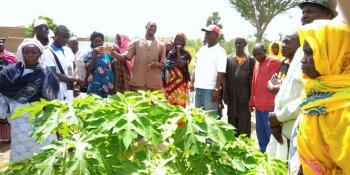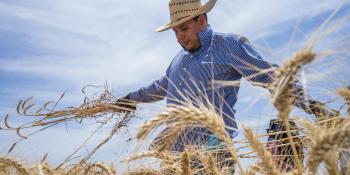Rising temperatures spell tough times for cocoa in West Africa

New research exposes urgent need for adaptation for the cocoa sector in West Africa owing to rising temperatures.
Did you know it takes approximately 400 cacao beans to make one pound (450 g) of chocolate? Yet each tree produces roughly 1,000 beans a year—fine chocolate is expensive, right?
Two-thirds of world cocoa production originates from West Africa alone led by Côte d’Ivoire and Ghana. The important West African production basin extends from Guinea to Cameroon where, apart from Benin, all the countries grow cocoa trees. Overall, climate models recognized by the Intergovernmental Panel on Climate Change (IPCC) point to a decrease in climatic suitability for cocoa in Côte d’Ivoire and Ghana, that if not addressed, could impact future world cocoa supplies.
In her recent post on the CIAT blog, Georgina Smith, Communications Coordinator for Africa at CIAT, writes about a study conducted by the CGIAR Research Program on Climate Change, Agriculture and Food Security (CCAFS) scientists based at the International Centre for Tropical Agriculture (CIAT).
The study analyzed the drivers of current and future climate vulnerability of cocoa in West Africa by identifying those climate factors that could potentially become limiting for cocoa in parts of the region and therefore need to be given particular attention in developing adaptation strategies. The study also suggests adaptation measures to reduce the vulnerability of cocoa to the projected changes. Finally, this study shows which countries in the cocoa belt are likely to be more or less affected by future climate change and discuss opportunities and possible risks of cocoa expansion into climatically less vulnerable areas.
Overall, maximum dry season temperatures are projected to become limiting for cocoa necessitating the need for adaptation measures.
Smith quotes Peter Läderach, leader of the Climate Change Program at CIAT and co-author of the study:
“In future, maximum temperatures on the cocoa belt in the dry season could approach the limits of tolerance for cocoa. In general, what our maps show is that areas under cocoa production are going to shrink."
Some of the recommended adaptation actions will include systematic use of shade trees in cocoa farms. Alternatively cocoa breeders will need to take into account higher temperatures as they come up with better varieties in the midst of expected higher temperatures.
The blog, titled 'Chocolate meltdown: feeling the heat' written by Georgina Smith and published on the CIAT blog, explains more on climate factors that could become limiting for cocoa, possible adaptation measures as well as other interesting findings.
Download the study:
Schroth, Götz; Läderach, Peter; Martinez-Valle, Armando Isaac; Bunn, Christian; Jassogne, Laurence. 2016. Vulnerability to climate change of cocoa in West Africa: patterns, opportunities and limits to adaptation. Science of the Total Environment 556(15): 231-243.
News update prepared by Vivian Atakos, Communication Officer for CCAFS East Africa. Original blog by Georgina Smith, Communications Coordinator for Africa at CIAT.



